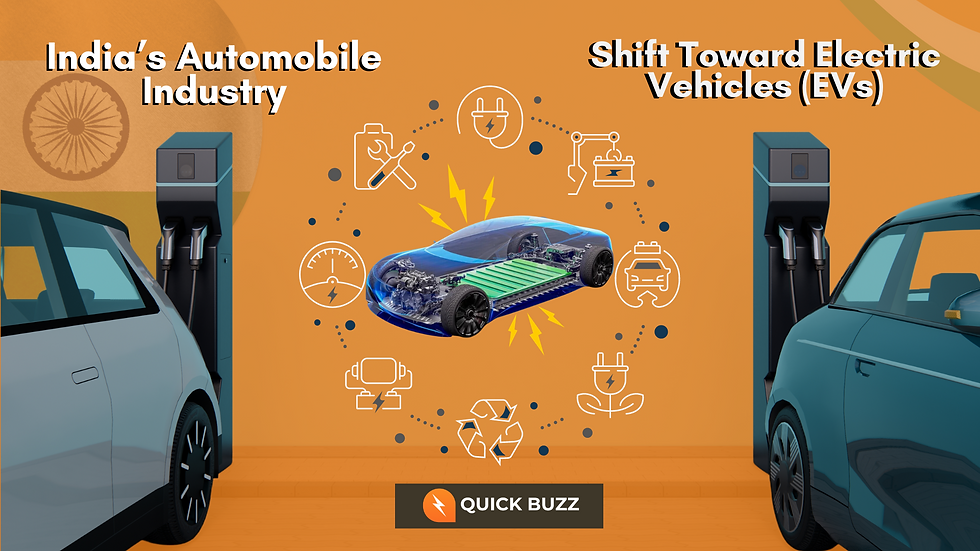India’s Automobile Industry: Shift Toward Electric Vehicles (EVs)
- Don_CricPlaaj

- Oct 25, 2024
- 2 min read
Updated: Mar 6
India’s automobile industry is undergoing a transformative shift, driven by growing environmental concerns and government initiatives to adopt electric vehicles (EVs). With increasing air pollution and the country’s commitment to the Paris Agreement, the Indian government has implemented several policies to encourage the transition from traditional internal combustion engine (ICE) vehicles to electric-powered alternatives.

Government Initiatives and Policies
The government has launched the Faster Adoption and Manufacturing of Hybrid and Electric Vehicles (FAME) scheme, aimed at promoting EV adoption in the country. The scheme includes incentives for manufacturers and buyers, as well as plans for setting up charging infrastructure. The second phase of the FAME initiative (FAME II), which started in 2019, focuses on expanding EVs in public transport and commercial fleets, further accelerating the transition.
Additionally, the Goods and Services Tax (GST) on EVs has been reduced to 5% compared to 28% for ICE vehicles, which significantly lowers the cost for consumers. The government is also encouraging the production of EV components, such as batteries, within India to reduce dependence on imports and make EVs more affordable.
Market Response and Growth
Indian automakers are swiftly adapting to the shift by launching electric versions of their popular models. Leading manufacturers like Tata Motors, Mahindra, and Hero Electric have made significant investments in EV technology. Tata Motors, in particular, has seen success with its Nexon EV, which has become one of the best-selling electric cars in the country.
Moreover, startups like Ather Energy and Ola Electric are contributing to the rise of EVs, particularly in the two-wheeler segment. These companies are making electric scooters and bikes more accessible to the average consumer, further boosting the demand for EVs in urban areas.
Challenges and Opportunities
Despite the positive outlook, India’s EV market faces several challenges. Charging infrastructure remains limited, especially in rural areas. Additionally, the high cost of EVs and batteries still poses a barrier to widespread adoption. However, the government’s push for domestic battery manufacturing and improvements in infrastructure are expected to reduce costs over time.
India’s shift toward EVs presents significant opportunities for new businesses, especially in battery production, charging infrastructure, and sustainable energy. Foreign investors and tech companies are also entering the market, further driving innovation and competition.
The Road Ahead
India’s journey toward electrification is just beginning, but the industry’s growth trajectory is promising. As infrastructure develops and costs decrease, the adoption of EVs is expected to rise steadily. With continued government support and a focus on innovation, India has the potential to become a global leader in the electric vehicle market.




